栈之中缀表达式转后缀表达式(逆波兰表达式)思路
一、前言
此篇只着重讲解中缀转后缀的过程,多次查阅他人讲解,都觉得讲解甚是云里雾里,记录思考过程,以便回顾,如有错误,欢迎指出,正确的知识总是在不断的知识碰撞中得出
二、 逻辑图示

三、 案例图解
1. ![]()
根据上图所示
1.1 "9" 为操作数 -> 直接输出

1.2 "+" 为操作符且不等于"(" || ")"且栈为空 -> 压栈

1.3 "(" 直接-> 压栈

1.4 "3" 为操作数 -> 输出

1.5 "-" 位操作数,由于当前栈顶元素为左括号,不需要比较 -> 压栈
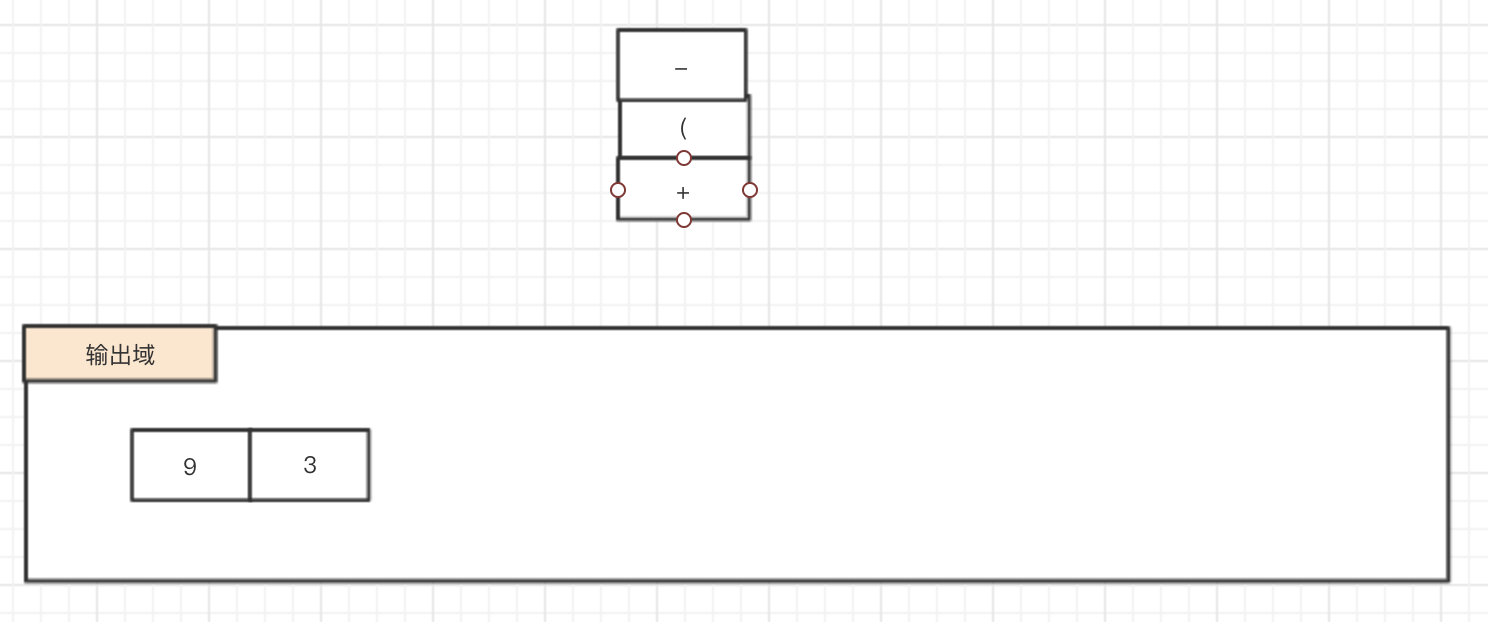
1.6 “1” -> 输出
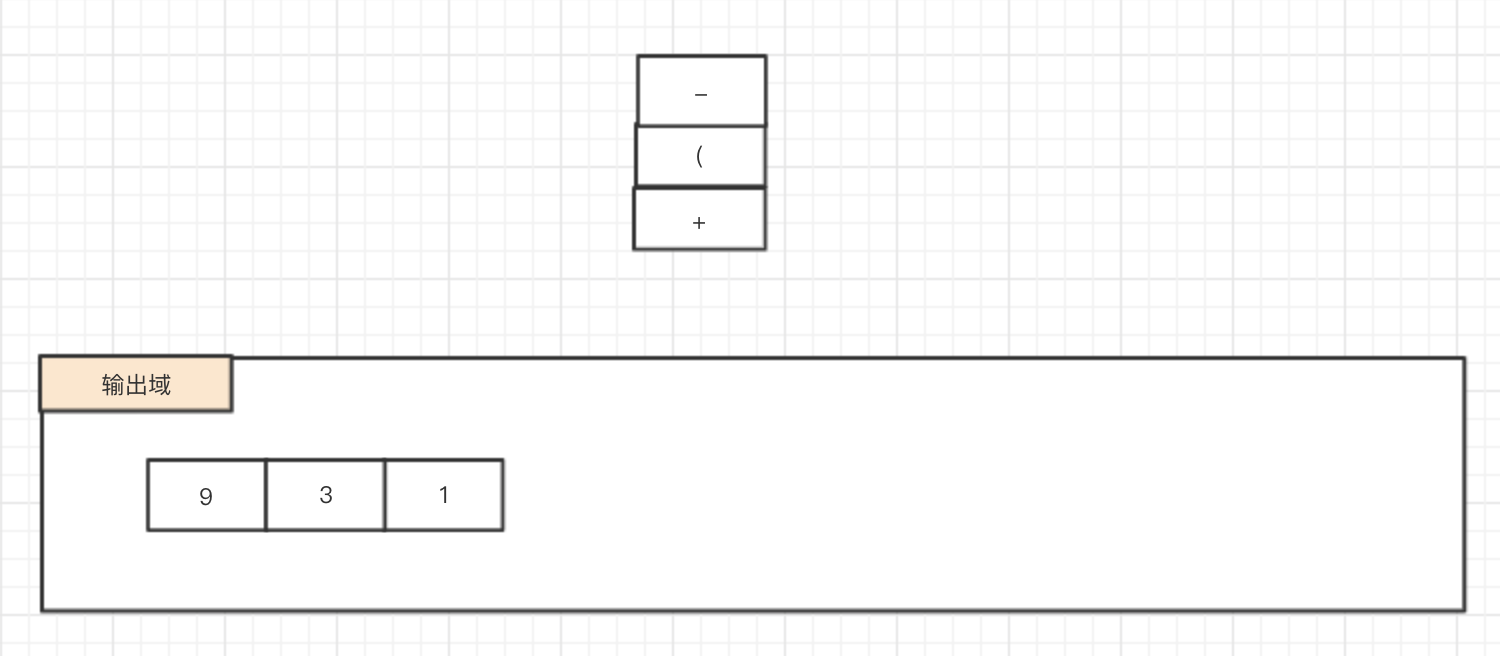
1.7 ")" : 遇到右括号,此时将左括号上的元素依次弹出,并将弹出的元素除了左右括号之外依次输出
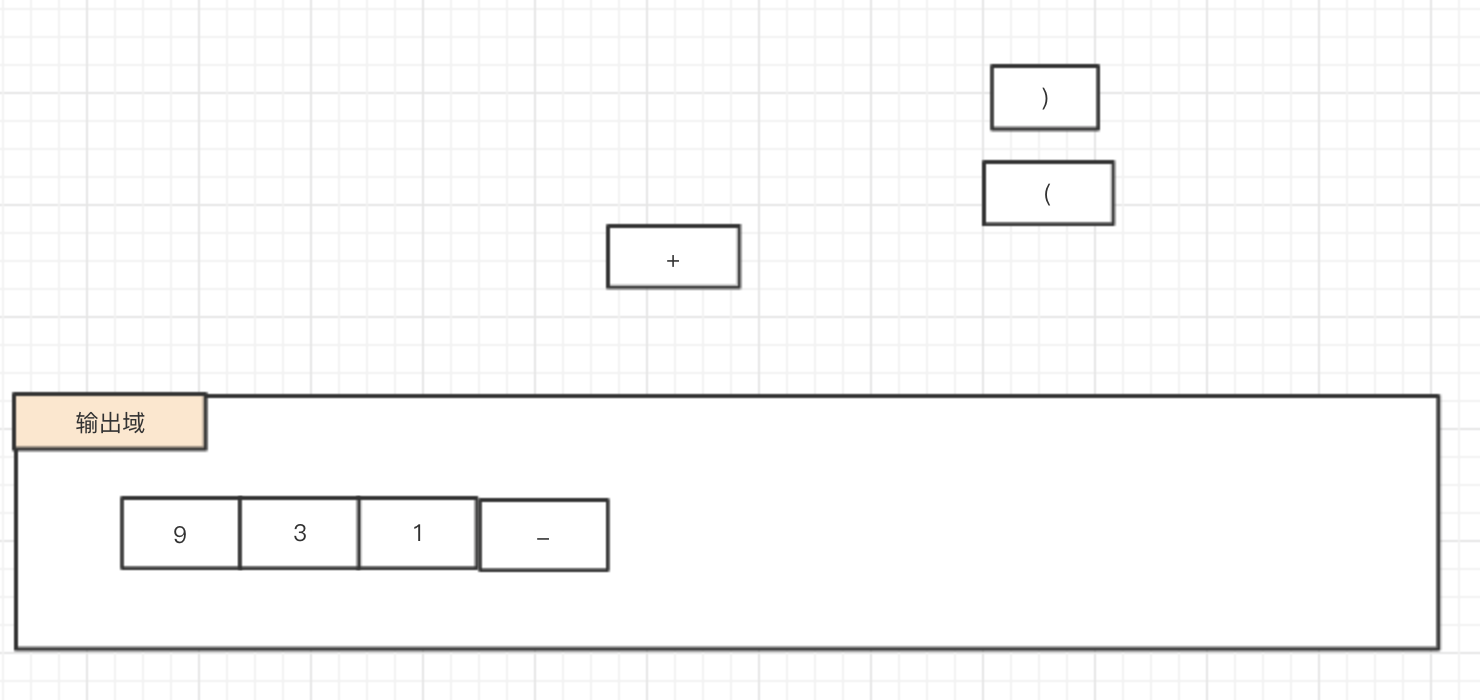
1.8 “*”: 此时操作符的优先级大于栈顶元素 -> 压栈

1.9 “3” -> 输出
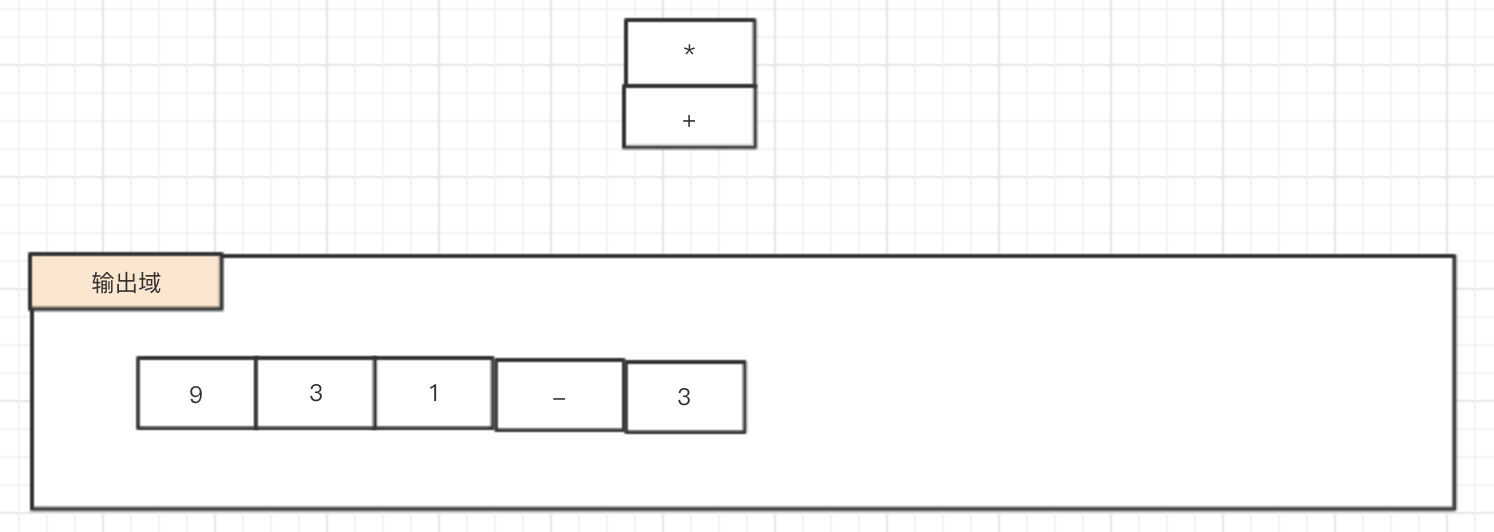
1.10 “+” : 此时改操作符的优先级不大于栈顶,依次将比自己优先级打的操作符出栈,知道找到比自己优先级高的栈顶为止,这里由于 在栈内的元素分别是 “*” 和 “+” ,当前操作符 “+” 都小于这两个操作符,于是这两个操作符都依次出栈并输出,并将当前操作符入栈
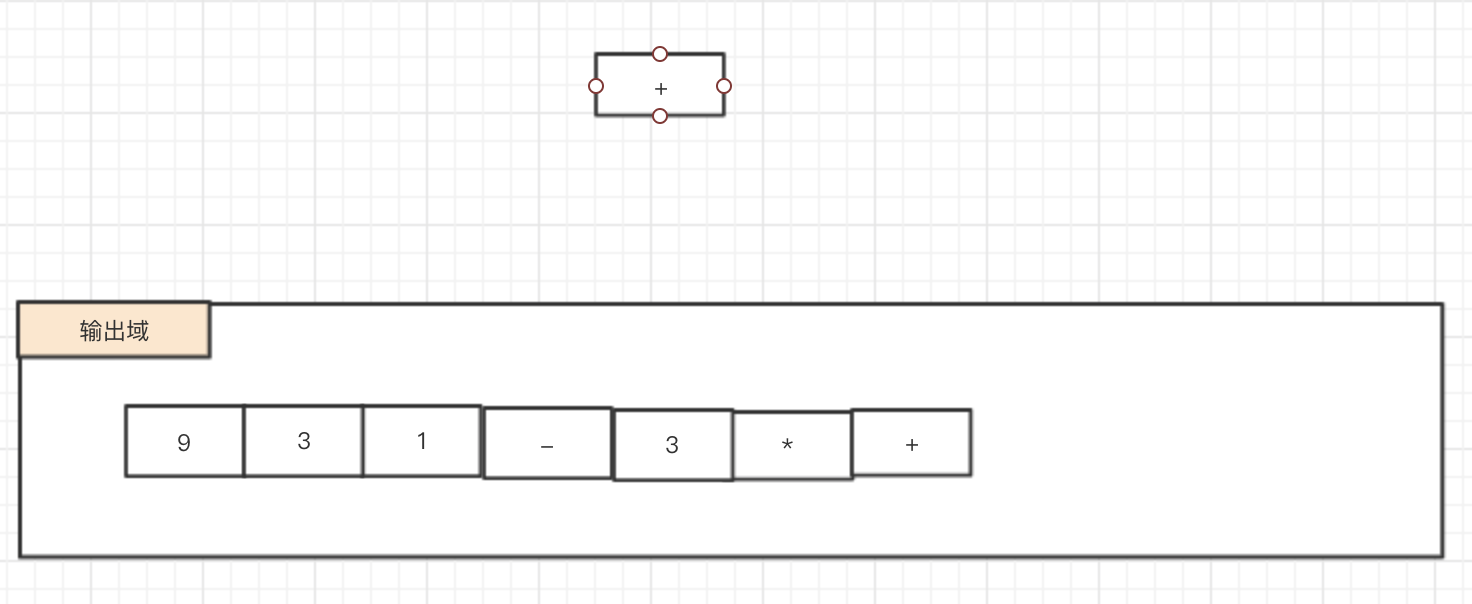
1.11 "10" -> 输出
1.12 “/” 操作符优先级> 栈顶元素(“+”) -> 压栈
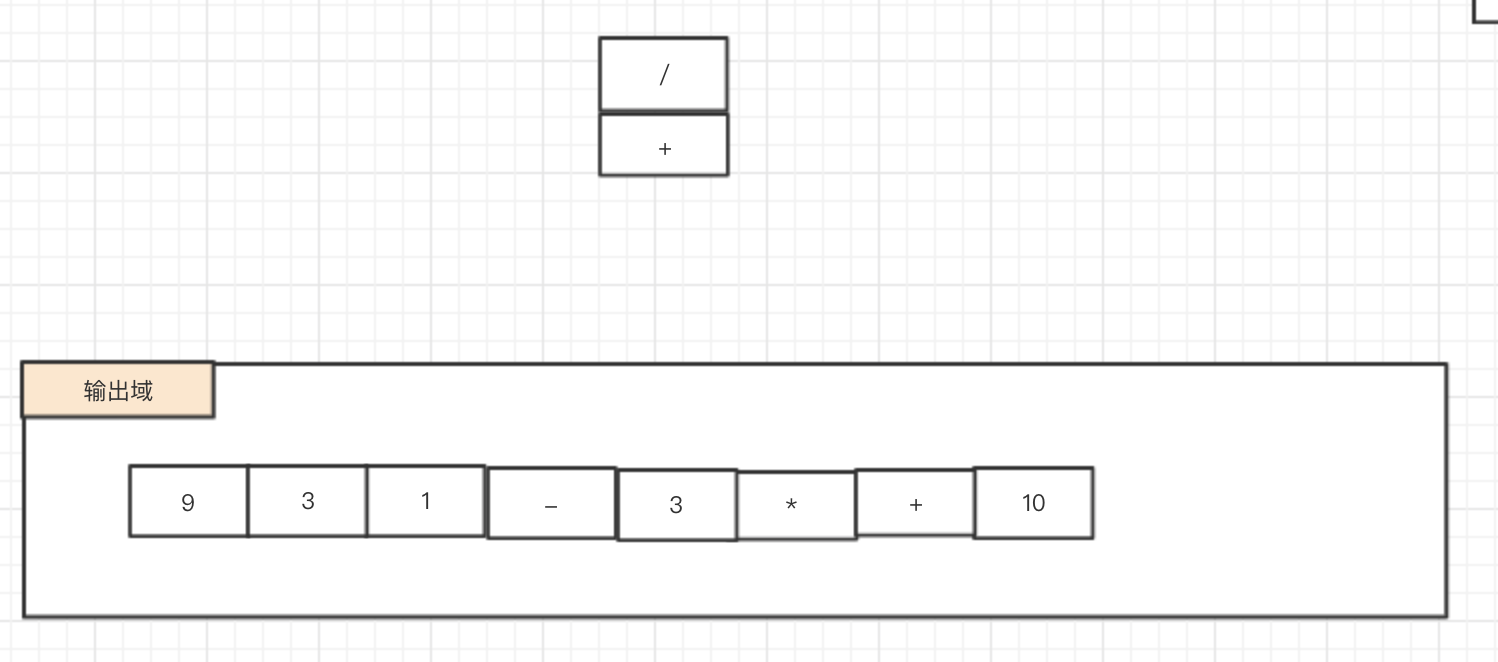
1.13 “2” -> 输出
1.14 当元素都遍历完后,检查栈是否为空,如果非空,依次出栈并输出

四、代码实现
实际上实现代码下来还是卡住了好久,这个点是当前值的优先级 小于 栈顶 要出栈的程序
function Stack() { var items = []; // 存储数据 // 【压栈】从栈顶添加数据 this.push = function(item){ items.push(item) } // 从栈顶删除数据 this.pop = function(){ return items.pop() } // 获取栈顶元素 this.top = function(){ return items[items.length - 1] } // 判断栈是否为空 this.isEmpty = function() { return items.length === 0 } // 返回栈的大小 this.size = function() { return items.length } // 清空栈 this.clear = function() { items = [] } // 打印栈元素 this.content = function(){ console.log('Stack>>', items) } } // 中缀转后缀 const priority_Map = { '+': '1', '-': '1', '*': '2', '/': '2' } function infix_exp_2_postfix_exp(exp) { // debugger let stack = new Stack() let postfix_exp = [] for(let i = 0; i < exp.length; i++) { let item = exp[i] // 如果是数字 -> 输出 if(/[0-9]/.test(item)) { postfix_exp.push(item) // 如果是左括号 -> 压栈 } else if (/\(/.test(item)) { stack.push(item) // 如果是右括号 -> 出栈并输出直到item === '(' , } else if(/\)/.test(item)) { while(!(stack.top() === '(')) { postfix_exp.push(stack.pop()) } stack.pop() // 如果是操作符 -> } else if(/[+|-|*|\/]/.test(item)) { // 如果栈为空 -> 压栈 if(stack.isEmpty()){ stack.push(item) // 如果栈顶元素的优先级为空(遇到左右括号) -> 压栈 } else if(!priority_Map[stack.top()]) { stack.push(item) // item 优先级 > 栈顶优先级(成立): 压栈 ; } else if(priority_Map[item] > priority_Map[stack.top()]) { stack.push(item) // item 优先级 > 栈顶优先级(不成立): 栈内元素出栈输出直到遇到item > 栈内元素的优先级, 当前元素压栈 ; } else { // 首先确保是操作然后再进一步比较优先级大小,当当前item 优先级任然小于栈顶元素的优先级的时候就持续出栈输出 while( priority_Map[stack.top()] && !(priority_Map[item] > priority_Map[stack.top()])) { postfix_exp.push(stack.pop()) } // 当前元素压栈 stack.push(item) } } } // 检查栈是否为空,如果不为空,就依次输出 const stack_len = stack.size() for(let i = 0; i < stack_len; i++) { postfix_exp.push(stack.pop()) } return postfix_exp } // console.log(infix_exp_2_postfix_exp(['12', '+', '3'])) // console.log(infix_exp_2_postfix_exp(['(', '1', '+', '(', '4', '+', '5', '+', '3', ')', '-', '3', ')', '+', '(', '9', '+', '8', ')'])) console.log(infix_exp_2_postfix_exp(['(', '1', '+', '(', '4', '+', '5', '+', '3', ')', '/', '4', '-', '3', ')', '+', '(', '6', '+', '8', ')', '*', '3']))
五、 总结
如果做到中缀转后缀后,可以往下做后缀的计算,大致思路是,如果是操作数就压栈,如果是操作符就连续出两个栈的数字并计算结果,将结果压栈
作者:承蒙时光
出处:http://www.cnblogs.com/timetimetime/
本文版权归作者和博客园共有,欢迎转载,但未经作者同意必须保留此段声明,且在文章页面明显位置给出原文连接,否则保留追究法律责任的权利。



